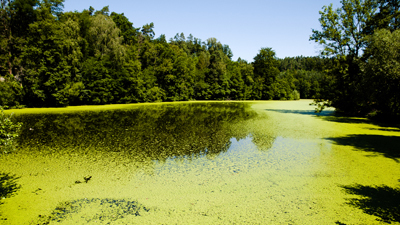Determining Bioavailable Phosphorus Concentrations
- Student
- Ally Marrs
- College(s)
- College of Science
- Faculty Advisor
- Jen Tank
- Class Year
- 2020

In freshwater systems, phosphorus (P) is often considered a growth-limiting nutrient. The use of agricultural fertilizers to maintain crop yields has led to increased P availability and the eutrophication of downstream ecosystems.
The amount of P in a system available for algal growth, characterized as soluble reactive P (SRP), is often measured using the molybdate-blue method on filtered water samples, while analysis of total P (TP) includes all forms of P in an unfiltered water sample. Research has shown SRP measurements are not always representative of bioavailable P (BAP).
Methodology to estimate BAP, including algal cultures and NaOH extractions, are often costly and onerous. Here, we developed a novel yeast growth assay to measure BAP concentrations, comparing yeast abundance to a standard curve with known amounts of KH2PO4 (R2=0.99). We compared BAP in samples collected during a rain-on-snow storm event and a streambed dredging event in an agricultural stream. We added yeast in a P-limited media to unfiltered water samples and measured yeast abundance via absorbance after a four-day incubation.
We found that median BAP concentrations typically fell between SRP and TP during the storm event, and were higher than both SRP and TP during the dredging event. The variation in BAP across all samples was best explained by water column turbidity, which may be a better surrogate for BAP than SRP or TP. Our results illustrate that BAP concentrations can be accurately estimated using simple yeast assays and can vary substantially with disturbance events in agricultural streams.